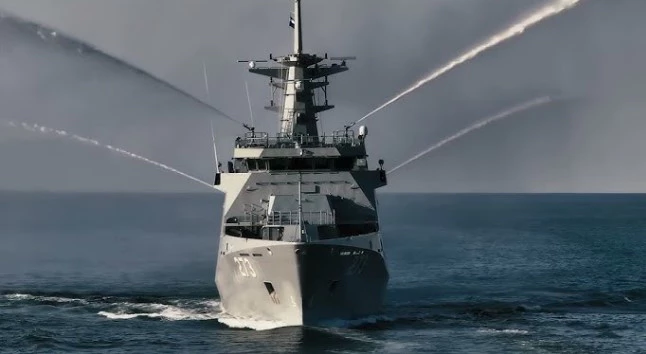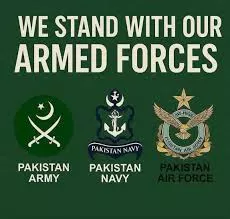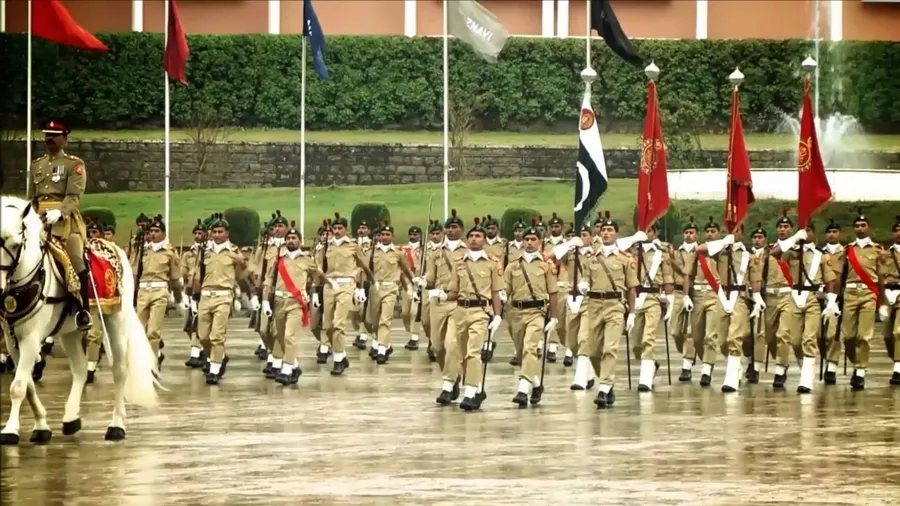Exploring Introduction, Ranks, and Units
Structure of Pakistan Navy ; a critical branch of the Pakistani Armed Forces, plays a vital role in safeguarding the maritime interests of Pakistan. This blog delves into the structure of the Pakistan Navy, providing an overview of its history, ranks, units, and divisions. Whether you’re a military enthusiast, a student, or someone interested in naval operations, this comprehensive guide offers valuable insights into one of Pakistan’s most important defense forces.
Introduction to the Pakistan Navy
The Pakistan Navy was established at the time of Pakistan’s independence on August 14, 1947. It originated from the Royal Indian Navy, with its primary mission to defend Pakistan’s coastline, protect its maritime interests, and support the national economy by ensuring the security of sea lines of communication.
History and Evolution
Initially, the Pakistan Navy inherited a modest fleet of ships and personnel from the Royal Indian Navy. Over the years, it has grown into a formidable force, modernizing its fleet and expanding its operational capabilities. Key milestones in its history include the acquisition of submarines, the development of indigenous shipbuilding capabilities, and active participation in international maritime coalitions.
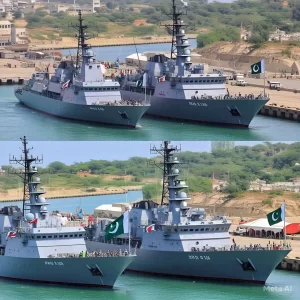
Historic image of Pakistan Navy ships at the time of independence Mission and Objectives
The Pakistan Navy’s primary mission is to protect Pakistan’s maritime interests, including its coastline, territorial waters, and exclusive economic zone (EEZ). Additionally, it is tasked with maintaining the security of sea lines of communication, supporting national policies and interests, and contributing to regional and global maritime stability.
Ranks in the Pakistan Navy
The Pakistan Navy follows a structured ranking system that mirrors those of other modern navies. The ranks are divided into commissioned officers, junior commissioned officers, and non-commissioned officers.
Structure of Pakistan Navy – Commissioned Officers
- Admiral – The highest rank, equivalent to a four-star general in the army.
- Vice Admiral – Equivalent to a three-star general.
- Rear Admiral – Equivalent to a two-star general.
- Commodore – Equivalent to a one-star general.
- Captain – Senior officer responsible for commanding ships or naval installations.
- Commander – Mid-level officer, often in command of smaller ships or shore units.
- Lieutenant Commander – Junior officer, usually second in command of a ship or unit.
- Lieutenant – Entry-level officer rank for graduates of the Pakistan Naval Academy.
- Sub-Lieutenant – Initial officer rank after commissioning.
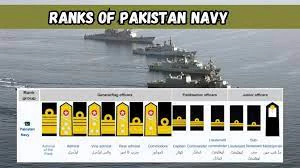
Junior Commissioned Officers
- Chief Petty Officer
- Petty Officer
Non-Commissioned Officers
- Leading Seaman
- Able Seaman
- Ordinary Seaman
Size of Units and Divisions
The Pakistan Navy is organized into various units and divisions, each with specific roles and responsibilities.
Naval Fleets
- Surface Fleet – Comprising destroyers, frigates, and corvettes tasked with surface warfare operations.
- Submarine Fleet – Equipped with conventional submarines for underwater warfare and reconnaissance.
- Aviation Wing – Includes maritime patrol aircraft, helicopters, and drones for surveillance and support operations.
Naval Commands and Bases
- Karachi Command – The primary naval command located in Karachi, housing several key bases and installations.
- West Command – Responsible for operations in the Arabian Sea and the western maritime frontier.
- North Command – Focuses on the northern areas and inland waters.
Specialized Units
- Special Service Group (Navy) – Elite unit specializing in special operations, including counter-terrorism and reconnaissance.
- Maritime Security Agency – Responsible for enforcing maritime law and ensuring the security of Pakistan’s maritime boundaries.
- Naval Strategic Force Command – Manages Pakistan’s naval strategic assets, including nuclear deterrents.
Structure of Pakistan Navy – Training Institutions
- Pakistan Naval Academy – The premier training institution for naval officers, located in Karachi.
- PNS Bahadur – Provides advanced training and professional development for naval personnel.
- PNS Himalaya – Basic training establishment for sailors.
Divisions and Their Functions
The Pakistan Navy is divided into several functional divisions to streamline operations and enhance efficiency.
Operations Division
Responsible for planning and executing naval operations, including maritime security, disaster relief, and joint exercises with allied navies.
Logistics Division
Ensures the supply and maintenance of naval vessels, equipment, and personnel. This division is crucial for the operational readiness of the fleet.
Engineering Division
Focuses on the maintenance and repair of ships, submarines, and aircraft. This division also handles the development and integration of new technologies.
Medical Division
Provides medical services to naval personnel, including routine healthcare, emergency medical support, and specialized treatments.
Training and Education Division
Oversees the training and professional development of naval personnel, ensuring they are equipped with the skills and knowledge required for their roles.
Interested in learning more about the Pakistan Navy or pursuing a career in this prestigious force? Visit the Official Website of Pakistan Navy for more information on recruitment, training programs, and the latest news. Stay informed and support our naval forces as they continue to protect and serve Pakistan.
By understanding the structure, ranks, and operational units of the Pakistan Navy, we gain a deeper appreciation for the dedication and professionalism of its personnel. This comprehensive guide aims to provide a clear overview for those interested in the intricate workings of Pakistan’s maritime defense force. Whether you’re a student, a military enthusiast, or someone considering a naval career, this blog offers valuable insights into the Pakistan Navy’s robust and dynamic structure.
Learn more about Inter Service Ranks >>>>> Defenders of Sea Frontiers
Learn more about Undersea Fleet >>>> Surface Combatants

